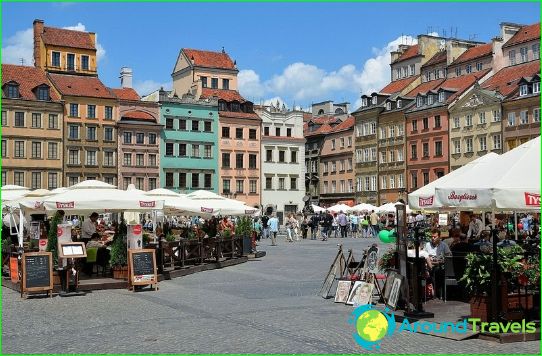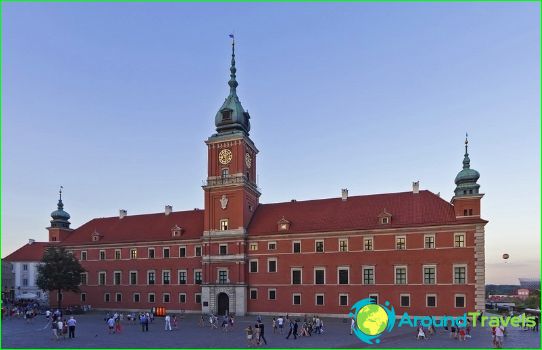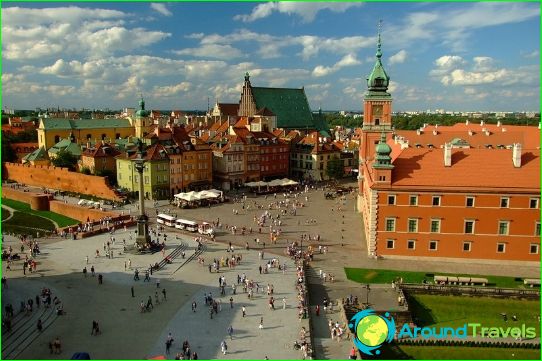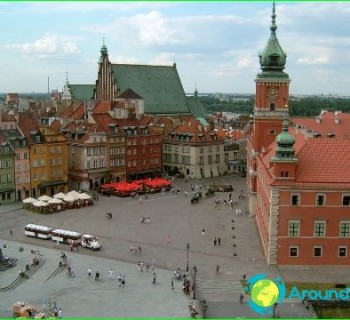History of Warsaw

Warsaw is the capital and largest city of Poland, as well as the economic and cultural center of the country.
Brodno (IX-X), Kamion (XI) and Yazduv (XII-XIII) are considered the first well-fortified settlements on the lands of modern Warsaw (information about the existence of which is beyond doubt). After the latter in 1281 was thoroughly destroyed by the Płock prince Boleslav II of Mazovia, just 3-4 km north of Yazduv on the site of a small fishing village, Warsaw was founded.
Middle Ages
The first written records of Warsaw date back to 1313. More extensive information is contained in the court case against the Teutonic Order, the hearing of which took place in Warsaw's Cathedral of St. John in 1339. At the beginning of the 14th century, Warsaw was already one of the residences of the Mazovian princes, and in 1413 it officially became the capital of Mazovia. During this period, the basis of the Warsaw economy was made up of crafts and trade, and class inequality was already quite clearly traced..
In 1515, during the Russian-Lithuanian War, most of the Old Town was burned down. In 1525, the ever-increasing social contrast and the infringement of the poor classes by the nobility led to the first uprisings, as a result of which the so-called third estate was accepted into the current government. In 1526 Mazovia, including Warsaw, became part of the Kingdom of Poland, which undoubtedly contributed to the unprecedented economic growth of the city. In 1529, the Polish Sejm met for the first time in Warsaw (on a permanent basis since 1569).
In 1596 Warsaw, largely due to its geographical position (between Krakow and Vilnius, in close proximity to Gdansk), became the capital of not only the Kingdom of Poland, but also the Polish-Lithuanian Commonwealth, continuing to develop and grow rapidly. The architectural appearance of Warsaw of this period was dominated by the late Renaissance style with elements of the Gothic. Numerous baroque residences of the local nobility around the city grew up in the 17th-18th centuries..
In 1655-1658, Warsaw was repeatedly besieged, as a result of which it was plundered several times by Swedish, Brandenburg and Transylvanian troops. The city suffered significant losses during the Northern War (1700-1721), during which Poland became one of the battlefields between Russia and Sweden. In addition to military disasters during this period, Warsaw also experienced epidemics, floods and crop failures. Nevertheless, in the post-war period, the city recovered quite quickly and continued to actively develop in all spheres (finance, industry, science, culture, etc.). The same period in the history of Warsaw was marked by rapid construction and a sharp increase in population..
19-20 centuries
Warsaw remained the capital of the Polish-Lithuanian Commonwealth until the final cessation of its existence in 1795, after which it was annexed to Prussia, becoming the administrative center of South Prussia. In 1806, Napoleon's troops liberated Warsaw, and the city became the capital of the Duchy of Warsaw (under the French protectorate), and after the Congress of Vienna in 1816 - the capital of the Polish kingdom, which entered into a personal union with Russia, and in fact is experiencing full political and economic integration into the Russian Empire. Despite a series of uprisings caused by the violation of the Polish constitution and the oppression of the Poles, which led to a military conflict and as a result of Poland's loss of autonomy, Warsaw, which did not stand aside from the industrialization that swept Europe, developed and flourished. By the end of the 19th century, Warsaw was already the third largest city in the empire after St. Petersburg and Moscow..
In 1915-1918, during the First World War, Warsaw was occupied by the Germans, who, probably hoping for Poland's support in the war against Russia, not only opened a Technical University in the city, the Warsaw School of Economics and allowed teaching Poles in their native language, but also substantially expanded the city boundaries. On November 8, 1918, German troops left the city, and on the 10th, Jozef Pilsudski (head of the underground Polish military organization) returned to Warsaw and, having received powers from the Regency Council the next day, founded the independent Polish Republic, the capital of which was Warsaw..
The first years of independence were extremely difficult for Poland - chaos, hyperinflation and the Soviet-Polish war, the turning point in which was the famous Battle of Warsaw, which essentially predetermined the outcome of the war and allowed Poland to preserve its independence as a result..
On September 1, 1939, with the invasion of German troops into Poland, the Second World War began, which became one of the most global military conflicts in world history and claimed millions of lives. Warsaw, on the other hand, became one of the main centers of resistance to the Nazi regime in occupied Europe. Unfortunately, leaving the city, the Germans (despite the agreed terms of surrender) practically razed it to the ground and only thanks to the preserved drawings and plans, the Poles were subsequently able to restore the historic center of Warsaw with amazing accuracy. In 1980, the Old Town was declared a UNESCO World Heritage Site «as an exceptional example of the almost complete restoration of the historical period between the XIII-XX centuries».
Today Warsaw has the status «global city» and is experiencing perhaps the biggest economic boom in its history.





